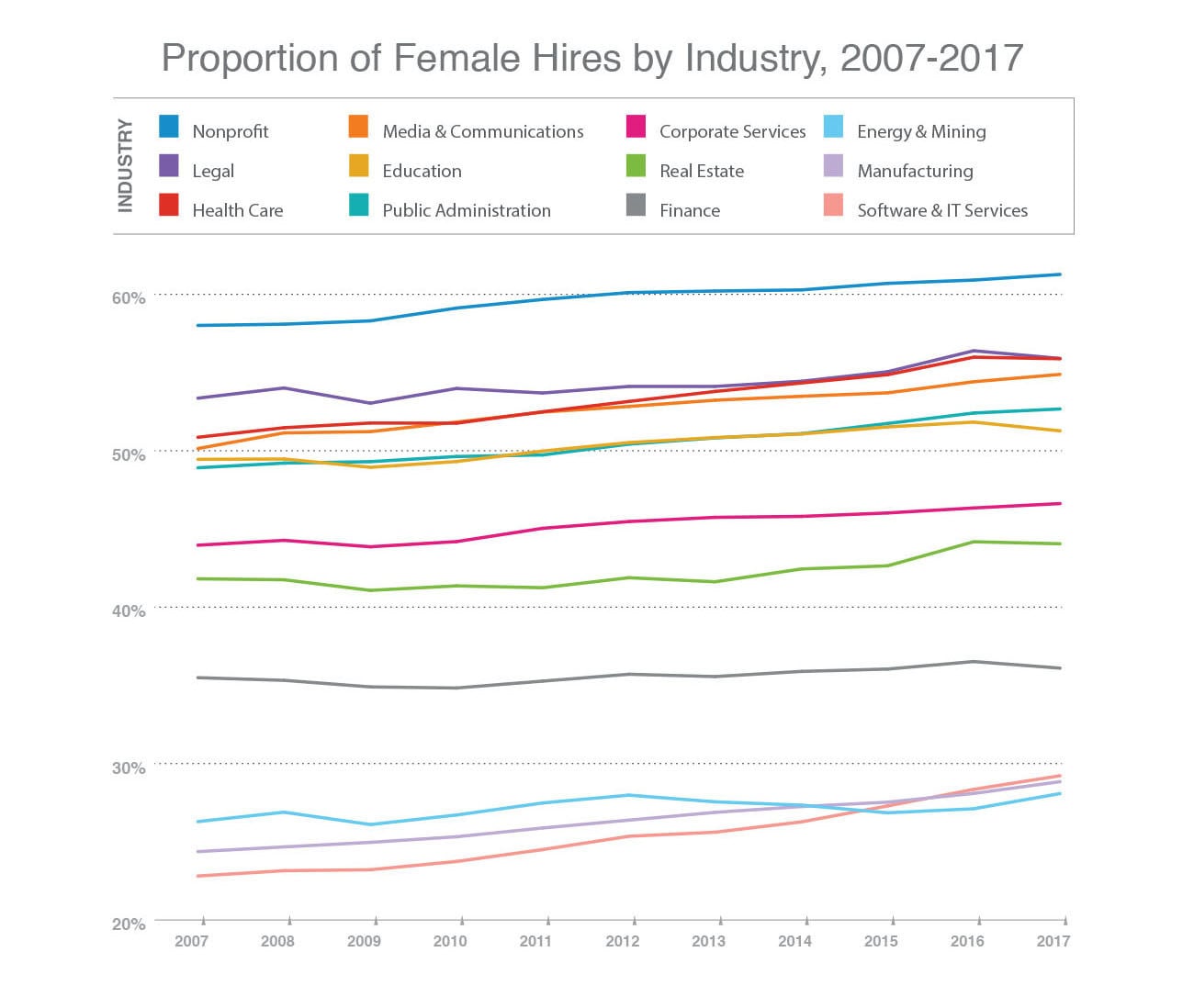The key to closing the gender gap? Putting more women in charge

Women in leadership roles are key to closing the gender gap at work Image: REUTERS/Rebecca Cook

Get involved with our crowdsourced digital platform to deliver impact at scale
Stay up to date:
Gender Inequality
While women worldwide are closing the gender gap in critical areas such as health and education, significant gender inequality persists in the workforce and in politics. Given current rates of change, this year’s Global Gender Gap Report estimates it will be another 217 years before we achieve gender parity.
As part of its workforce gap analysis, the World Economic Forum turned to LinkedIn to better understand the trends in gender equality across the workforce. Thanks to our unique insight into real-time workforce trends, LinkedIn can provide more depth, nuance, and timeliness than the sort of data historically gathered by governments or NGOs. Our data provide insight into the role women leaders play in driving overall economic equity and participation.

Closing the gender gap with women in leadership
Our research found that women represent fewer than 50% of leaders in every industry analysed - and in some fields, such as energy and mining or manufacturing, the representation of women is far lower, with women holding fewer than 20% of leadership positions. The rate of progress for women has been slow, too: over the past decade, the proportion of female leaders has increased by an average of just over 2% across the 12 industries studied.

LinkedIn’s data points to only three industries where female corporate leadership exceeds 40%: healthcare, education, and the non-profit sector. These industries have relied on female workers for generations, and have therefore perhaps provided women with more time and opportunities to work their way into senior roles. Unfortunately, as the Global Gender Gap Report also notes, historically female-dominated industries tend to pay less than those with higher male representation. When women enter a profession in large numbers, pay tends to decrease relative to other industries.
A rising tide: Women leaders hire more women
Our data shows that when women are better represented in leadership roles, more women are hired across the board. This holds true even when considering disparities in the size of female talent pools across industries.
This is not necessarily surprising. Numerous studies suggest that, consciously or not, individuals are more likely to hire people like them. Female candidates may also self-select into companies with higher proportions of leaders who are women, attracted to companies perceived as having more opportunities for advancement or mentorship. Additionally, prior World Economic Forum research indicates that female CEOs actually pay their high-earning women more than male CEOs do, which may create a financial incentive for women to join such companies.
Vicious cycle to virtuous circle: closing the gender gap by increasing women leaders
So if the proportion of women in leadership is growing too slowly, and these leadership positions are important for closing the gender gap in terms of the overall economic opportunity, it is clear that we need to increase and accelerate female representation at the highest level.
Our analysis found a strong correlation between the representation of women in leadership positions in a given industry and hiring rates for additional women leaders. The challenge of increasing the proportion of women leaders is, therefore, a Catch-22: it seems the way to get more women into leadership is by already having women in leadership.

Fortunately, there is some good news to report as well. LinkedIn’s data shows that a few industries, including legal, finance, and real estate, have all increased the rate at which they hire women for leadership positions over the past decade.
Female representation in leadership is a top indicator for hiring of women at all levels, thereby creating a deeper bench of female talent at more junior levels to be promoted into leadership roles.
Increasing the proportions of women leaders - both through improved hiring rates for leadership positions, as well as building strong internal pipelines for promotion - could be the start of a virtuous circle, eventually leading to more equity of economic opportunity for women globally.
While today’s Global Gender Gap Report demonstrates the progress that has been made over the past decade, it is clear that we still have a long way to go in closing the gender gap, especially when it comes to economic participation. Encouraging more female leadership is one of the levers for increasing gender equality in the workforce. Ultimately, however, if we are to get there, it will require men and women, at all levels, to embrace and promote diversity and inclusion.
Don't miss any update on this topic
Create a free account and access your personalized content collection with our latest publications and analyses.
License and Republishing
World Economic Forum articles may be republished in accordance with the Creative Commons Attribution-NonCommercial-NoDerivatives 4.0 International Public License, and in accordance with our Terms of Use.
The views expressed in this article are those of the author alone and not the World Economic Forum.
Related topics:
The Agenda Weekly
A weekly update of the most important issues driving the global agenda
You can unsubscribe at any time using the link in our emails. For more details, review our privacy policy.
More on Gender InequalitySee all
Claude Dyer and Vidhi Bhatia
April 18, 2024
Morgan Camp
April 9, 2024
Rida Tahir
April 9, 2024
Andrea Willige
April 8, 2024
Gilles Roucolle and Sumati Sharma
April 5, 2024






